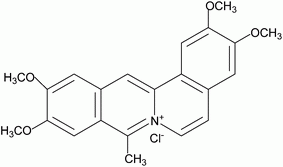In the first post of this series, I told you about the amazing attempts to make nanomachines and 3D structures from DNA molecules, some coming in place in medicine, others – in electronics. Here’s some light on the newest advance in DNA-based computers – the DNA diode.
Researches have just published a paper in Nature Chemistry describing in details the first ever diode made of a DNA molecule. A diode is essentially an element which conducts electricity in one direction infinitely better than in the opposite, much like the pump in your garden sprinkler would not allow the water to flow back into the pipe it’s coming from. This new type of diode might revolutionize computing once again by being considerably faster and much smaller compared to the modern silicon chips.
But why did researchers look into entirely different means to build chips? Because we are already pushing the limits of silicon chips – if we make them any smaller their conductivity would decrease considerably, and would defeat the purpose of being stable and predictable. If anything – no one needs super powerful, but completely unreliable computer!

And as a badly hidden secret, DNA is becoming the favorite tool in the sandbox of novel technologies and especially in electronics, appealing to engineers with its programmability and predictability. So in this case, a group from Uni of Georgia (the state, not the country) decided to see what would happen if they hooked a short DNA molecule of known sequence to a nano-sized circuit. In the beginning – not much – as DNA is highly symmetric molecule, not much stops the current flowing with similar speeds in both directions.But they decided to play around a little more, their gut feeling telling them that this could be quite something. So they started introducing different chemicals into the DNA structure and before long the 11 base-pair strand of DNA turned into a powerful diode. The molecule that hit the home-run was the so-called coralyne.

It is a poly-aromatic compound and these have been known to incorporate well between the bases of DNA. In fact, the term intercalation means exactly this – a molecule incorporating between the bases of a DNA strand without necessarily severely disrupting the structure of DNA or breaking it. Many toxic and mutagenic chemicals with similar structure and abilities are believed to cause cellular malfunction by preventing the DNA operating enzymes to properly use or copy the cellular DNA and thus disrupting key processes in the cell. And some of the chemo-therapy agents in fighting cancer are used for exactly this ability – in this case, introduced to the cancer cells only.
So once this molecule formed a complex with DNA, it altered slightly its symmetry in a way that made it conduct 15 times faster in one way, compared to the opposite. And this is how the DNA diode was born. With its size being 1000 times smaller than the current components used in electronics, DNA diodes seem to be heading for the big market, once they are developed well enough. The same team is planing to continue its work and create additional molecular devices in the aim for the ultimate biochip.
So stay tuned for more fascinating bio-technology hybrid discoveries – they are for sure on their way from various labs around the world!

